
Skate or Die! is a skateboarding video game released by Electronic Arts (EA) in 1987 for the Commodore 64. It is EA's first internally developed game. Versions for the Apple IIGS, MS-DOS, Amstrad CPC, and ZX Spectrum followed. It was ported to the Nintendo Entertainment System by Konami, published under the company's Ultra Games branding.
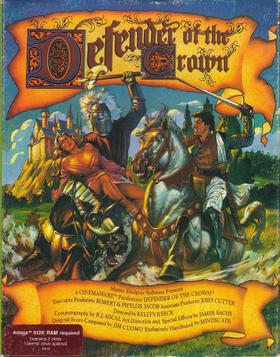
Defender of the Crown is a strategy video game designed by Kellyn Beeck. It was Cinemaware's first game, and was originally released for the Commodore Amiga in 1986, setting a new standard for graphic quality in home computer games.

Sid Meier's Pirates! is a video game created by Sid Meier for the Commodore 64 and published by MicroProse in 1987. It was the first game to include the name "Sid Meier" in its title as an effort by MicroProse to attract fans of Meier's earlier games, most of which were combat vehicle simulation video games. The game is a simulation of the life of a pirate, a privateer, or a pirate hunter in the 16th, 17th and 18th centuries. It was widely ported to other systems.

Roadwar 2000 is a 1986 video game published by Strategic Simulations, Inc. It is a turn-based strategy game set in a post-apocalyptic future which resembles the world portrayed in the Mad Max films.

The Faery Tale Adventure is a 1987 action role-playing video game designed by David Joiner and published by MicroIllusions for the Amiga, and later ported to the Commodore 64, MS-DOS, and Sega Genesis. The MS-DOS version is titled The Faery Tale Adventure: Book I. Microillusions also released a "Book 1" version for the Amiga which was going to be the start of a series of games, according to Talin, but bankruptcy prevented it. The initial version was produced for the Amiga 1000 and featured the largest game world to that date. A sequel, Faery Tale Adventure II: Halls of the Dead, was released in 1997.
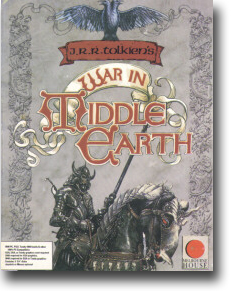
War in Middle Earth is a real-time strategy game released for the ZX Spectrum, MSX, Commodore 64, Amstrad CPC, MS-DOS, Amiga, Apple IIGS, and Atari ST in 1988 by Virgin Mastertronic on the Melbourne House label.
Test Drive is a series of racing video games that were originally published by Accolade until they were bought by Infogrames, the first game was released in 1987 and has since been followed by several sequels and spin-offs, the last of which was released in 2012.

Moebius: The Orb of Celestial Harmony is a video game produced by Origin Systems and designed by Greg Malone. It was originally released in 1985 for the Apple II. Versions were also released for the Amiga, Atari ST, Commodore 64, Macintosh, and MS-DOS. The game is primarily a top-down view tile-based role-playing video game, but it has action-based combat sequences which use a side view, roughly similar to games such as Karateka.

The Kristal is an adventure game first released in 1989 for the Amiga computer. It was later released for the Atari ST and MS-DOS. It was developed by the UK-based company Fissionchip Software, and published in Europe by Addictive Games and in the US by Cinemaware. Unusually for a video game, the game is based on a play, The Kristal of Konos, written in 1976; the authors of the play worked together with the game developers and the play was never shown in theatres or on film before the game's release. A dialog introducing the setting recorded by Patrick Moore, who introduced both the game and play.
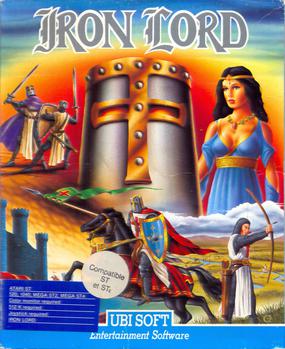
Iron Lord is an adventure video game developed by Orou Mama and Ivan Jacot for the Atari ST and published by Ubi Soft in 1989. It was ported to the Amiga, Acorn Archimedes, Amstrad CPC, Commodore 64, ZX Spectrum, and MS-DOS.
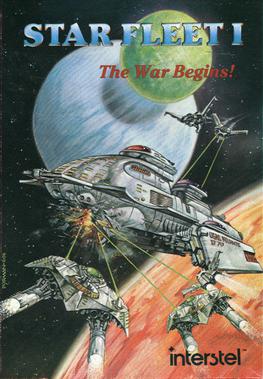
Starfleet I: The War Begins is a 1984 strategy computer game designed by Trevor Sorensen and developed by Interstel. It was released for Apple II, DOS and Commodore 64. Versions for the Commodore 128, Atari ST and Atari 8-bit family were released in 1986 and versions for the Amiga and Macintosh were released in 1987. The game was successful enough to spawn sequels which are collectively known as the Star Fleet series.

Shanghai is a computerized version of mahjong solitaire published by Activision in 1986 for the Amiga, Atari ST, Atari 8-bit family, Commodore 64, DOS, Macintosh, Apple IIGS and Master System. Shanghai was originally programmed by Brodie Lockard. It was released as an arcade game by Sunsoft in 1988.
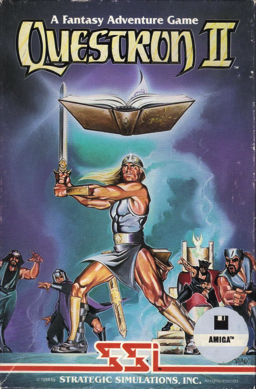
Questron II a 1988 role-playing video game published by Strategic Simulations for the Apple II, Apple IIGS, Atari ST, Commodore 64, IBM PC, and Amiga. It is the sequel to 1984's Questron. The story and original design is credited to Quest Software, the programming and artwork is credited to Westwood Associates.

Macadam Bumper is a video pinball simulation construction set developed by ERE Informatique in France. It was first released for 8-bit computers in 1985, the Atari ST in 1986 and MS-DOS in 1987. The Atari ST and MS-DOS versions were released in the US as Pinball Wizard in 1988 by Accolade.

Skyfox II: The Cygnus Conflict is a space combat computer game developed by Dynamix and published by Electronic Arts in 1987 for the Commodore 64 as a sequel to the original Skyfox for the Apple II. It was ported to the Amiga, Atari ST, and MS-DOS. The creator of Skyfox, Ray Tobey, was not involved in this game.
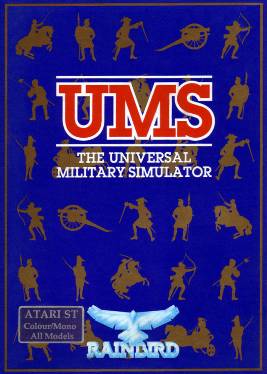
The Universal Military Simulator is a computer game developed by Rainbird Software in 1987 for the Macintosh, Tandy 4000, and IBM PC compatibles. In 1988, both Atari ST, Amiga versions were released. The game was created by Ezra Sidran. The PC and Amiga versions were ported by Ed Isenberg. The game spawned two sequels: UMS II: Nations at War and The War College: Universal Military Simulator 3.

Final Assault, known as Chamonix Challenge in Europe, originally Bivouac in French, is a mountaineering simulation distributed by Infogrames and Epyx in 1987 for the Amiga, Amstrad CPC, Apple IIGS, Atari ST, Commodore 64, MS-DOS, Thomson and ZX Spectrum. The original release of the game was copy protected.

Falcon is a combat flight simulator video game and the first official entry in the Falcon series of the F-16 jet fighter's simulators by Spectrum HoloByte. Originally developed by Sphere for Macintosh and MS-DOS in 1987 and ported to several platforms between 1988 and 1992, the game earned commercial success and critical acclaim.

Ogre is a 1986 computer game based on the Ogre board wargame. It was released by Origin Systems for the Apple II, Amiga, Atari 8-bit family, Atari ST, Commodore 64, MS-DOS, and Macintosh.



















